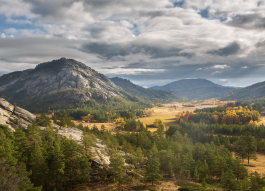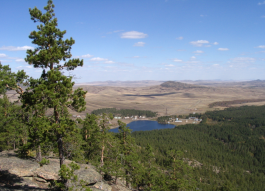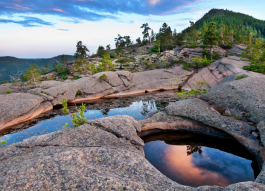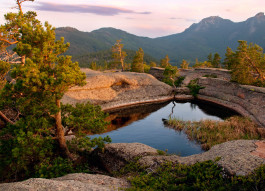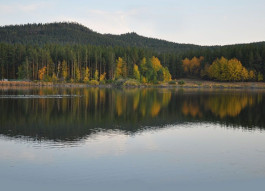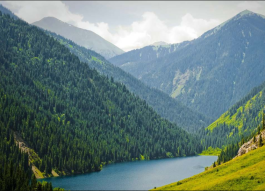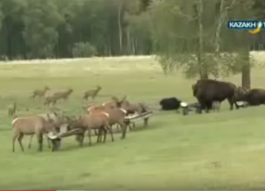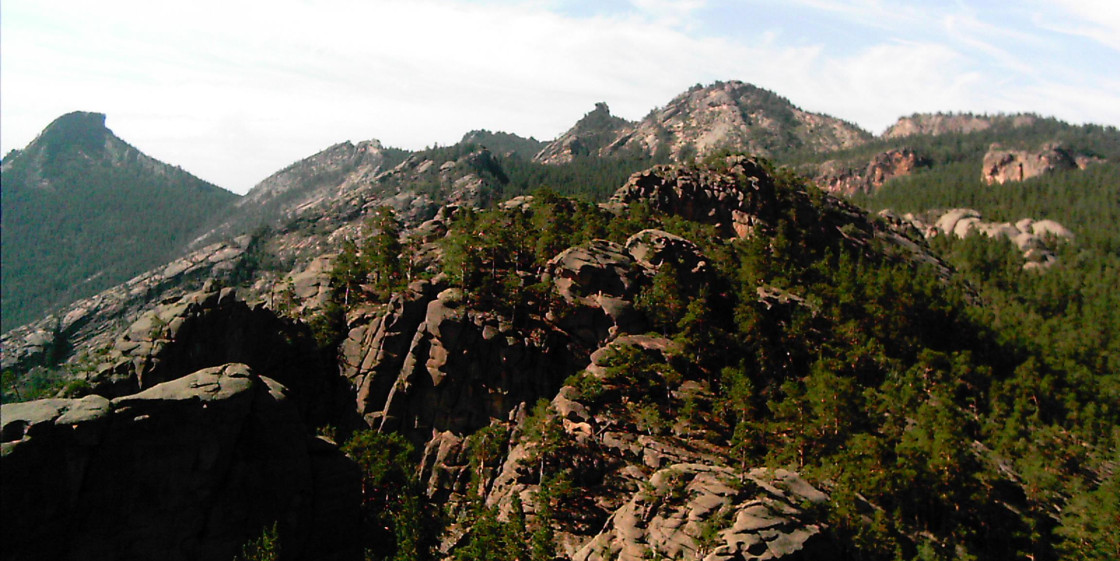
 National parks & reserves
National parks & reserves
49.4159, 75.4235
Karkaraly National Park is a protected reserve and national park in the Karaganda Oblast (Karaganda Region) of Kazakhstan. The park headquarters are in the city of Karkaraly, 244 km east of Karaganda.
On March 1, 1884, the Karkaraly Forest was established. In 1889, construction began on many of the parks cordons: Bedaik, Koktube, Ayushat, Tulkebai, Tonkurus, and others. From 1910 to 1913, the House of the Forest Warden, the parks most famous building was constructed. It is known for its interesting architecture.
In the beginning of 20th century, all former forest cottages were allotted to army troops, Karkaraly Cossacks, and to local people. The Kent and Karkaraly forest cottages were part of the Karkaraly forest treasury and were state property. After the October Revolution, the entire forest area became part of the state forest fund.
Having undergone several administrative changes in 1947, the Karkaraly Forestry Department was organized. In the beginning of the 1990s, work began on the creation of the national park. On December 1, 1998, resolution number 1212 was passed, transforming the area into the Karkaraly National Park. The primary goal of the national park is the protection and restoration of the natural area within the park boundaries.
Geography
The total area of Karkaraly National Park is 112,120 ha. Of this 44,339.5 ha are forested. The park territory is divided into 4 areas:
Mountain Forest - 25576 hectares
Karkaraly Forest - 23846 hectares
Kent Forest - 40,901 hectares
Baktuh – 21,797 hectares
The park has 22,243 hectares where all forms of economic activities are forbidden. The park has 89,877 hectares where all economic activities under strict control are allowed.
Near the park are two other protected areas:
Bektauata National Preserve – 500 hectares
Beldeutac National Preserve - 44,660 hectares
In the Paleozoic Age (250-300 million years ago), this area of Kazakhstan was an inland sea. The water retreated 1.2 to 2 million years ago when the ancient Paleozoic shield was cracked by granite. The area lifted and created the Kent and Karkaraly Mountains. The rocks and cliffs have been here ever since and for many thousands of years, the untamable steppe wind and precipitation has sculpted the rocks into unique shapes.
People have lived in the Karkaraly area since ancient times. The earliest archeological finds connected with ancient people dates back to the Paleolithic (or Stone) Age. Archeological sites from the Bronze Age have been investigated more often. There are over 30 archaeological sites (from the Stone Age, Bronze Age, and Iron Age) of burial mounds and ancient settlements within the park boundaries. Some of these are the best-discovered sites from these periods in Kazakhstan.
Nature Museum
Karkaraly National Park built the Nature museum in 1983. The two-story wooden building consists of exhibition halls of flora and fauna found in the Karkaraly National Nature Park. In one of the halls of the museum is a 3D map of the national park. The building is known for its beautiful wooden interior. Adjacent to the nature museum is a large wildlife preserve that houses bison, red deer, fallow deer, yak, wild boar, and argali.
Lake Baceen
Lake Baceen is located at 1200m above sea level and 4.5 km (2.8 mi) north-west of the city Karkaraly. You reach the lake on the Eco-Trail “The Stone’s Tale.” Literally translated from Russian, the lake's name is Lake Basin, due to the geological formations surrounding the lake. The lake is small- only .14ha. The lake is only accessible by foot and generally takes 4 hours round-trip. This trail takes you through pine forests, unique rock formations, and beautiful vistas from the lake.
Lake Shaitankol
Lake Shaitankol is one of the most popular areas in the park. The lake is located at 1200m above sea level and is 5 km (3.1 mi) west of the city Karkaraly. You reach the lake on the eco-trail “The Legend of Lake Shaitankok.” The lake is accessible by foot and generally takes 5 hours round-trip. The lake is oval in shape and surrounded by rock cliffs up to 10m high. The depth of the lake is unknown. The water level does not decrease throughout the year because it is fed underground water and precipitation. The translation from the Kazakh and Russian name is "Devil's Lake".
Fauna
Birds. There are 153 species of birds in the park. 11 of these species are in Kazakhstan’s Red Book of Protected Species [1]. They are golden eagle, imperial eagle, steppe eagle, booted eagle, saker falcon, Eurasian eagle-owl, Dalmatian pelican, black stork, whooper swan, swan goose, Pallas's sandgrouse.
Of these, the imperial eagle, saker falcon, and Dalmatian pelican are protected internationally under the IUCN Red List. The park also has the lesser kestrel, which is protected internationally under the IUCN.
Mammals. The park has 46 species of mammals, including the wolf, red fox, corsac fox, European badger, wild boar, red deer, Siberian roe deer, moose, argali, Eurasian lynx, three species of bat, Pallas's cat, and many others. The argali and Pallas’s cat are protected under Kazakhstan’s Red Book of Protected Species.
Argali is the largest species of sheep in the world. The argali in the national park is one of six subspecies of argali living in Kazakhstan. In the Karkaraly National Nature Park, the highest numbers of argali are in the Kent Mountains and in the neighboring Beldeutas Natural Reserve.
Pallas's cat
The Pallas's cat is the size of a domestic cat, but it is different from an ordinary cat it that it has a dense body with short thick legs and very thick hair. Its eyes are yellow and unlike the domestic cat, its pupils remain round when looking at bright light. This species is very rare. The population continues to decline and they are on the verge of extinction. The exact number of this species is unknown because of its secretive behavior and wide distribution.
Flora
The park has over 700 species of plants and is home to 80% of all flora found in central Kazakhstan. Five plant species are listed in Kazakhstan’s Red Book of protected species:
Kyrgyz birch
Smooth sphagnum
Thin poppy
Spring pheasant's eye
Karkaraly barberry
However, in total, there are 28 rare or disappearing kinds of flora in the park.
Forest in the Kent Mountains
The forests within the park are made up of pine, birch, poplar, willow, and juniper trees. 71.3% of the wooded area in the park are pine trees. Birch forest occupies 10% of the wooded area and aspen forest takes up 2%. The underbrush of the park includes Cossack’s juniper, Tatar’s honeysuckle, and other plants. Shrubs occupy 34% of the total area of the park. There are 87 kinds of medicinal, oil bearing and alkaloid plants in the Karkaraly Mountains.
Because of drought and high winds, 2,525 hectares of the Karkaraly forest were burned by forest fires in 1997-1998. After the fire, the park worked very hard on planting new trees and restoring the forest to its original state. A nursery in the Kent mountains provided the saplings for the revegetation project. Fire prevention standards were implemented and the following year 164 hectares were destroyed from 18 separate fires. In 2003, only 84 hectares were burned.
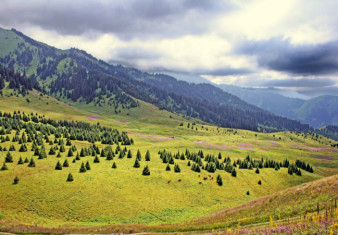
Ile-Alatau is a National Park in Kazakhstan. It was created in 1996 and covers about 200,000 ha.
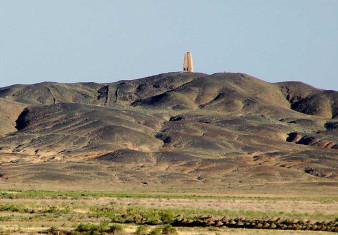
Karatau state nature reserve is the youngest among Republic reserves. It is founded by the Government of Republic of Kazakhstan under order №240 from March, 1st, 2004.
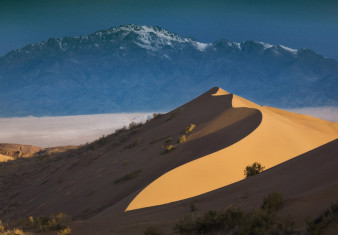
Altyn-Emel State National Nature Park is sprawled in the heart of Central Asia, in the valley of the Ili River, about 150 kilometers away from Almaty, Kazakhstan’s largest city.
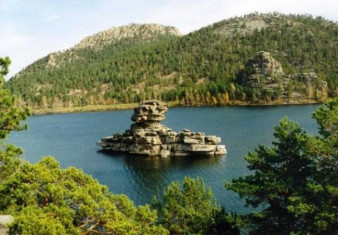
The Burabay National Park is a natural park located in the Burabay District, in Akmola Region, Kazakhstan. The park is under the direct jurisdiction of the President of Kazakhstan.
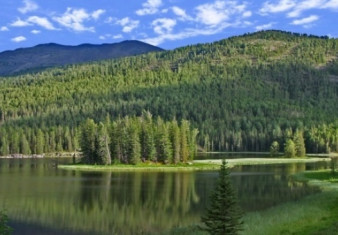
Katon-Karagay National Park is the largest national park in Kazakhstan, located on the eastern edge of the country, in the Southern Altai Mountains.
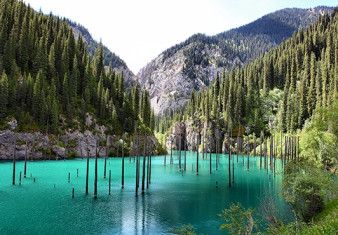
Kolsay Lakes National Park is centered on the Kolsay Lakes, a system of mountain lakes on the north slope of the Tian Shan Mountains of southeast Kazakhstan, 10 km from the border with Kyrgyzstan.














